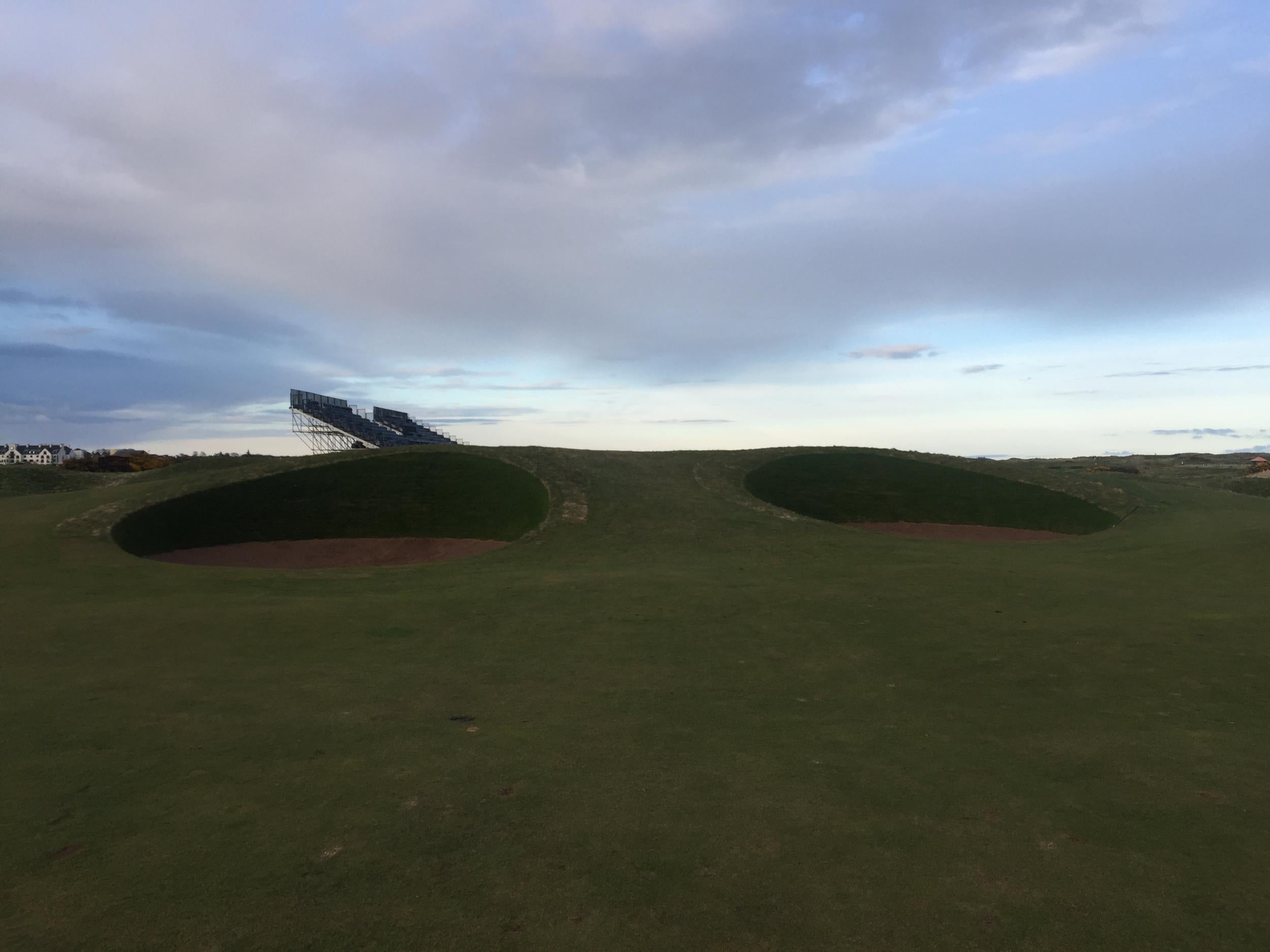The Open 2018: A brief introduction to Carnoustie Golf Links ahead of the 147th Championship
There is a reason its nickname is 'Carnastie'

Your support helps us to tell the story
From reproductive rights to climate change to Big Tech, The Independent is on the ground when the story is developing. Whether it's investigating the financials of Elon Musk's pro-Trump PAC or producing our latest documentary, 'The A Word', which shines a light on the American women fighting for reproductive rights, we know how important it is to parse out the facts from the messaging.
At such a critical moment in US history, we need reporters on the ground. Your donation allows us to keep sending journalists to speak to both sides of the story.
The Independent is trusted by Americans across the entire political spectrum. And unlike many other quality news outlets, we choose not to lock Americans out of our reporting and analysis with paywalls. We believe quality journalism should be available to everyone, paid for by those who can afford it.
Your support makes all the difference.When is the Open taking place?
The 147th Open Championship is being held at Carnoustie Golf Links from 19th to 22nd July.
Who won the last Open at Carnoustie?
Carnoustie has hosted the Open Championship seven times, the last Open winner at the links was Padraig Harrington in 2007.
What makes a links golf course?
For the uninitiated, the term 'links' originates from the Scottish term ‘hlinc’ denoting rough grassy land located between the sea and land.
It is in Scotland where links golf courses were first developed before spreading south of the border.
Open champions at Carnoustie
Tommy Armour (1931)
Henry Cotton (1937)
Ben Hogan (1953)
Gary Player (1968)
Tom Watson (1975)
Paul Lawrie (1999)
Padraig Harrington (2007)
There is no definitive criteria for what makes a links course but they are located on the coast. They are built on sandy soil, surrounded by dunes, populated with punishing bunkers and lacking in vegetation bigger than a bush.
So, if you find yourself standing with golf club in straw-like rough up to your thighs while leaning into a strong sea wind – you are playing links golf.
How is Carnoustie special?
All the courses on the Open rotation have heritage but Carnoustie has earned a reputation over its 175 years that differentiates it from the pack. It is regarded as the toughest Open course and one of the hardest golf courses in the world.
Found on a slither of coastline between Dundee and Montrose – Carnoustie is flat with little or no wind protection. And it is the wind that any prospective Open contender will have to master to avoid a meltdown by the 10th hole.

Being able to gauge if it is a two to three-club wind will mean the difference between a birdie and a triple bogie. At Carnoustie, there is always wind, it is simply a matter of how much which can vary from hole to hole, minute to minute.
For American pros used to hitting high trajectory shots from billiard table fairways onto hyper-engineered greens, Carnoustie will not prove an easy competition to make the cut. Players will need to be able to hit low fairway hugging shots onto narrow landing surrounded by killer rough.
It was after the 1999 Open, the ‘Carnoustie effect’ term orginated when the world best players, including a then-dominant Tiger Woods, were unable to come within a nautical mile of par.
Now houlies are not the only weapon in Carnoustie’s arsenal – the course is peppered with punishment bunkers. These hazards force golfers to take their medicine and lose at least a shot hacking their way out of these sandy pits of doom.
From my own experiences, the world-renowned course designers who reshaped this course throughout its history placed each bunker with an careful eye for psychological torture.
And then we move to the water torture of the iconic Carnoustie burns…One only has to remember 1999 and a certain French golfer’s meltdown on the final stretch to realise their fatal impact on many an Open challenge.

These concrete drainage ditches scythe through fairways and encircle greens forcing golfers to choose between survival or the slim hope of eternal glory. Never has the risk or reward nature of golf been such a stark option.
What are the holes to look out for?
Carnoustie is replete with a bevvy of signature holes fo you to keep an eye out for.
The first to keep your eye on is the 6th known simply as Hogan’s Alley. The tee shot seems simple but that is where the danger lies.
The out of bounds stakes border the left of the fairway all the way to the green. So golfers are forced to choose between the best placement on the left of fairway or go right and take on a tough second shot.

Its name originates with 1953 Open champion Ben Hogan who successfully hit all four drives on this hole down the left hand side of the fairway risking a dropped shot. Needless to say the urge to intentionally hook right is a strong one.
The turn (holes 9,10 & 11) at Carnoustie steps away from traditional links and introduces (cue gasps) tall trees and heavy gorse - offering a glimpse of classic English inland heath golf.

These holes offer short respite from the full intensity from the wind but still play host to the damnable burns lurking on both the 9th and 10th.
Spectacle bunkers on the par-5 14th are potentially some of the most dramatic green defences in the game.

Built into a ridge, they blind the golfer from the green and landing in them will derail plans for low scores even before players take on the last four holes.
Holes 15,16,17 and 18 are closing holes no professional golfer wants to face when looking to chase down a lead or even on defending a competitive score.

So, who will win?
Speaking to head pro at Carnoustie, Colin Sinclair, it is all about local knowledge.
As Carnoustie is one of the host courses of the annual Dunhill Links competition – it is European Tour players who will find themselves at an advantage. Unlike Open courses like Royal Birkdale or Royal Liverpool, these players get a chance each year to renew their notes and feel for the course.
In addition, this is a course where accuracy counts very high. Distance is a plus but if golfers cannot control their landing…lost shots will be inevitable.
Join our commenting forum
Join thought-provoking conversations, follow other Independent readers and see their replies
Comments